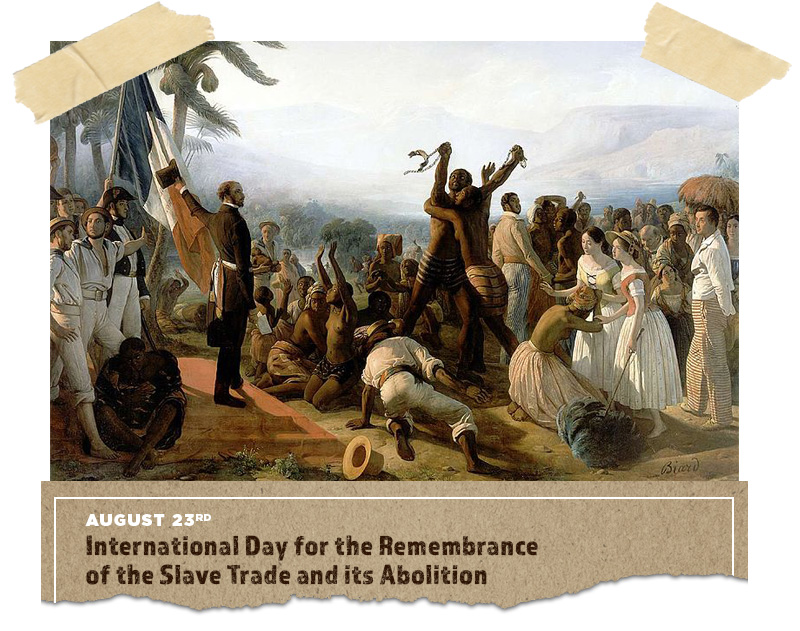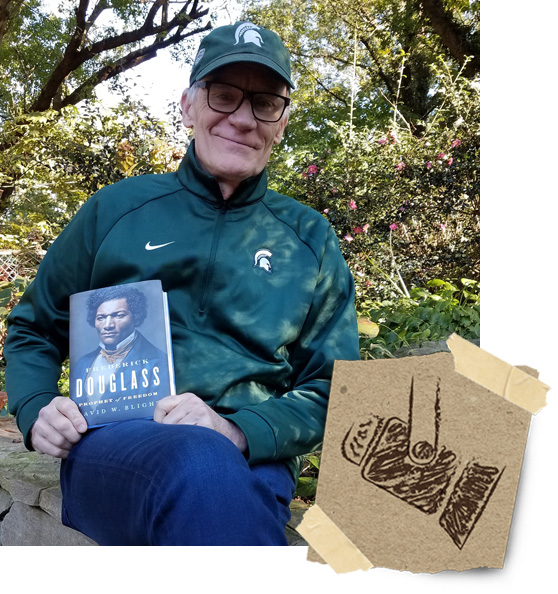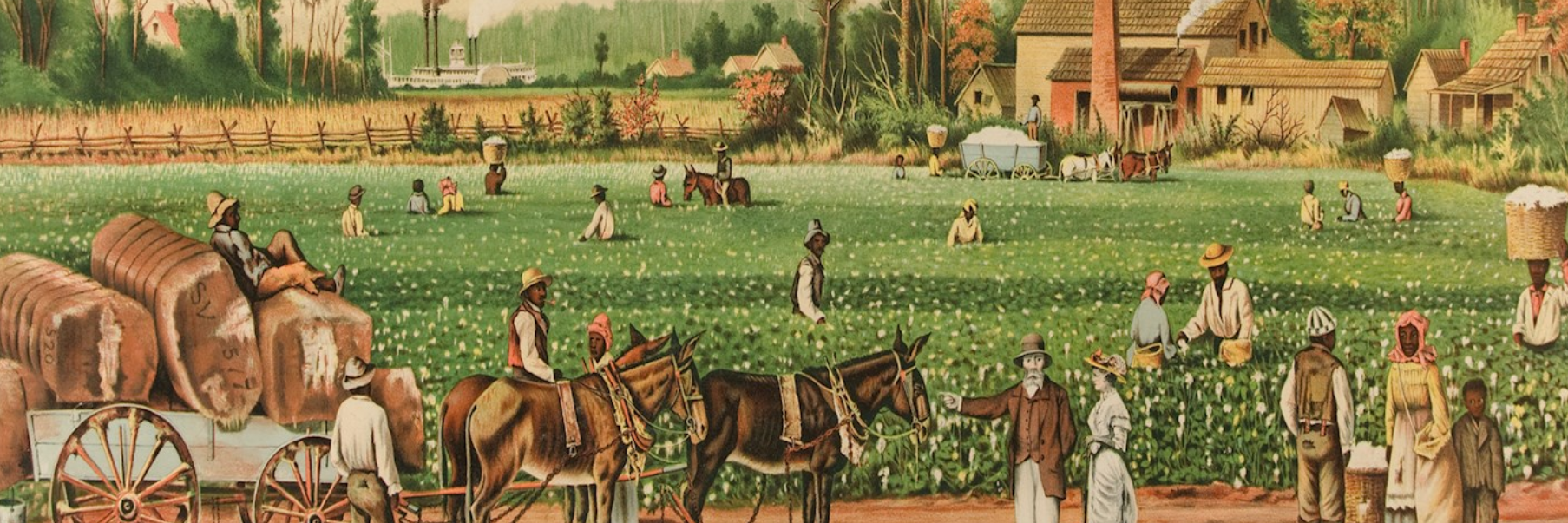Remembrance of the Slave Trade and its Abolition

Proclamation of the Abolition of Slavery in the French Colonies, 1848, by Auguste François Biard
On August 23rd, we celebrate the “International Day for the Remembrance of the Slave Trade and its Abolition,” a UNESCO designated day to memorialize the plight of peoples of African ancestry around the world, to gain their freedom from enslavement.

Diversity Champion
Faculty/Staff
Dr. Nakia Parker
Dr. Nakia Parker, an MSU Assistant Professor of History, is a scholar of Black life in Indian Slave Country. Dr. Parker has shaped our understanding of enslavement and abolitionism in America.

Diversity Torch
Student
Zach Sneathen
Mr. Zach Sneathen is a fourth-year MSU undergraduate majoring in Interdisciplinary Studies in Social Science, who took an African American History class with one of the college's newest assistant professors, Nakia Parker, in which he produced a podcast that discusses the importance of using appropriate language when talking about the history of slavery.

Diversity Spotlight
Alumni
Dr. David Blight
Dr. David Blight, an MSU History Alumnus, is a Sterling Professor of History, African American Studies, and of American Studies at Yale University. Dr. Blight is also the Director of the Gilder Lehrman Center for the Study of Slavery, Resistance and Abolition.

Project Spotlight
This month we also recognize a diversity digital history project, MSU's Enslaved: Peoples of the Historic Slave Trade, curated by Drs. Walter Hawthorne and Dean Rehberger in which they compile in a single space, archives, databases, and collections that help us understand the experiences of enslaved Africans.
Additional Resources
-
Books
-
Byrd, Alexander X. Captives and Voyagers: Black Migrants across the Eighteenth-Century British Atlantic World. Reprint edition. Baton Rouge: LSU Press, 2010.
-
Christopher, Emma. Slave Ship Sailors and Their Captive Cargoes, 1730-1807. New York: Cambridge University Press, 200
-
Curtin, Philip D. The Atlantic Slave Trade: A Census. Madison, WI: University of Wisconsin Press, 1972.
-
Davis, David Brion. Inhuman Bondage: The Rise and Fall of Slavery in the New World. New York: Oxford University Press, 2006.
-
Diouf, Sylviane A. Dreams of Africa in Alabama: The Slave Ship Clotilda and the Story of the Last Africans Brought to America. New York: Oxford University Press, 2007.
-
DuBois, W.E. B. The Suppression of the African Slave Trade to the United States of America 1638-1870, ed. Henry Louis Gates, Jr. New York: Oxford University Press, 2014.
-
Eltis, David. The Rise of African Slavery in the Americas. New York: Cambridge University Press, 1999.
-
Hawthorne, Walter. From Africa to Brazil: Culture, Identity, and an Atlantic Slave Trade, 1600–1830. New York: Cambridge University Press, 2010.
-
Inikori, Joseph E., and Stanley L. Engerman, eds. The Atlantic Slave Trade: Effects on Economies, Societies and Peoples in Africa, the Americas, and Europe. Durham, NC: Duke University Press, 1992.
-
Kaplan, Cora, and John Oldfield, eds. Imagining Transatlantic Slavery. Basingstoke, UK: Palgrave Macmillan UK, 2007.
-
Klein, Herbert S. The Atlantic Slave Trade. 2nd New York: Cambridge University Press, 2010.
-
Lovejoy, Paul E. Transformations in Slavery: A History of Slavery in Africa, 2nd New York: Cambridge University Press, 2000.
-
Mannix, Daniel, and Malcolm Cowley. Black Cargoes: A History of the Atlantic Slave Trade, 1518-1865. New York: Viking Press, 1962.
-
Morgan, Jennifer L. “Accounting for the ‘Most Excruciating Torment:’ Gender, Slavery, and Trans-Atlantic Passages.” History of the Present 6, no. 2 (October 2016): 184–207.
-
Mustakeem, Sowande M. Slavery at Sea: Terror, Sex, and Sickness in the Middle Passage. Urbana, Ill.: University of Illinois Press, 2016.
-
O’Malley, Gregory E. Final Passages: The Intercolonial Slave Trade of British America, 1619-1807. Chapel Hill, NC: University of North Carolina Press, 2016
-
Smallwood, Stephanie E. Saltwater Slavery: A Middle Passage from Africa to American Diaspora. Cambridge, Mass.; Harvard University Press, 2008.
-
Wheat, David. Atlantic Africa and the Spanish Caribbean, 1570-1640. Chapel Hill, NC: University of North Carolina Press, 2016.
-
Williams, Eric. Capitalism and Slavery. Chapel Hill, NC: The University of North Carolina Press, 1944.
-
Feelings, Tom. The Middle Passage: White Ships, Black Cargo. New York: Dial Books, 2018.
-
Hayden, Robert. “The Middle Passage” in The Penguin Anthology of Twentieth-Century American Poetry, ed. Rita Dove. New York: Penguin Books, 2011.
-
Hochschild, Adam. Bury the Chains: Prophets and Rebels in the Fight to Free an Empire’s Slave New York: Houghton Mifflin, 2005.
-
Slave Biographies, slavebiographies.org.
- Slave Voyages, slavevoyages.org.
-
-
Articles
-
Afigbo, Adiele E. "Africa and the Abolition of the Slave Trade." The William and Mary Quarterly, Third Series, 66, no. 4 (2009): 705-14.
-
Eltis, David. "The Volume and Structure of the Transatlantic Slave Trade: A Reassessment." The William and Mary Quarterly58, no. 1 (2001): 17-46.
-
Bucy, Ellen. "The Transatlantic Slave Trade and American Slavery." OAH Magazine of History17, no. 3 (2003): 55-56.
-
Page, Anthony. "Rational Dissent, Enlightenment, And Abolition of The British Slave Trade." The Historical Journal54, no. 3 (2011): 741-72.
-
Eltis, David, David Richardson, David Brion Davis, and David W. Blight. "Abolition and Suppression of the Transatlantic Slave Trade." In Atlas of the Transatlantic Slave Trade, 271-90. Yale University Press, 2010.
-
Keren, Ella. "The Transatlantic Slave Trade in Ghanaian Academic Historiography: History, Memory, and Power." The William and Mary Quarterly, Third Series, 66, no. 4 (2009): 975-1000.
-
Walsh, Lorena S. "The Chesapeake Slave Trade: Regional Patterns, African Origins, and Some Implications." The William and Mary Quarterly58, no. 1 (2001): 139-70.
-
Paul E. Lovejoy, and David Richardson. “Trust, Pawnship, and Atlantic History: The Institutional Foundations of the Old Calabar Slave Trade.” The American Historical Review, vol. 104, no. 2, 1999, pp. 333–355.
-
-
Media on Transatlantic Slave Trade & Abolition
-
The African Americans: Many Rivers to Cross with Henry Louis Gates, Jr. Episode 1: The Black Atlantic (1500-1800 ). Directed by Sabin Streeter. PBS. Aired October 22, 2013
-
Africans in America: America’s Journey Through Slavery. Part 1: The Terrible Transformation, 1450-1750. PBS.
-
Bob Marley and the Wailers. Slave Driver . Recorded 1972. Track 2 on Catch a Fire. Island Records.
-
The Book of Negroes. Writers, Lawrence Hill, Clement Virgo. Director Clement Virgo. BET. Aired February 16, 2015.
-
Gerima, Haile, dir. Sankofa. 1993; Washington, DC: Mypheduh Films, Inc., 2003. DVD.
-
Tyler Parry, “Lupe Fiasco’s “Manillas” and the Material Culture of Anti-Black Violence .” Black Perspectives.
-
Roots. Part 1. Writers, Alex Haley, Lawrence Konner, Mark Rosenthal. Director Philip Noyce. The History Channel. Aired May 30, 2016.
-
“The Slave Trade and Abolition.” Historic England, historicengland.org.uk/.
-

